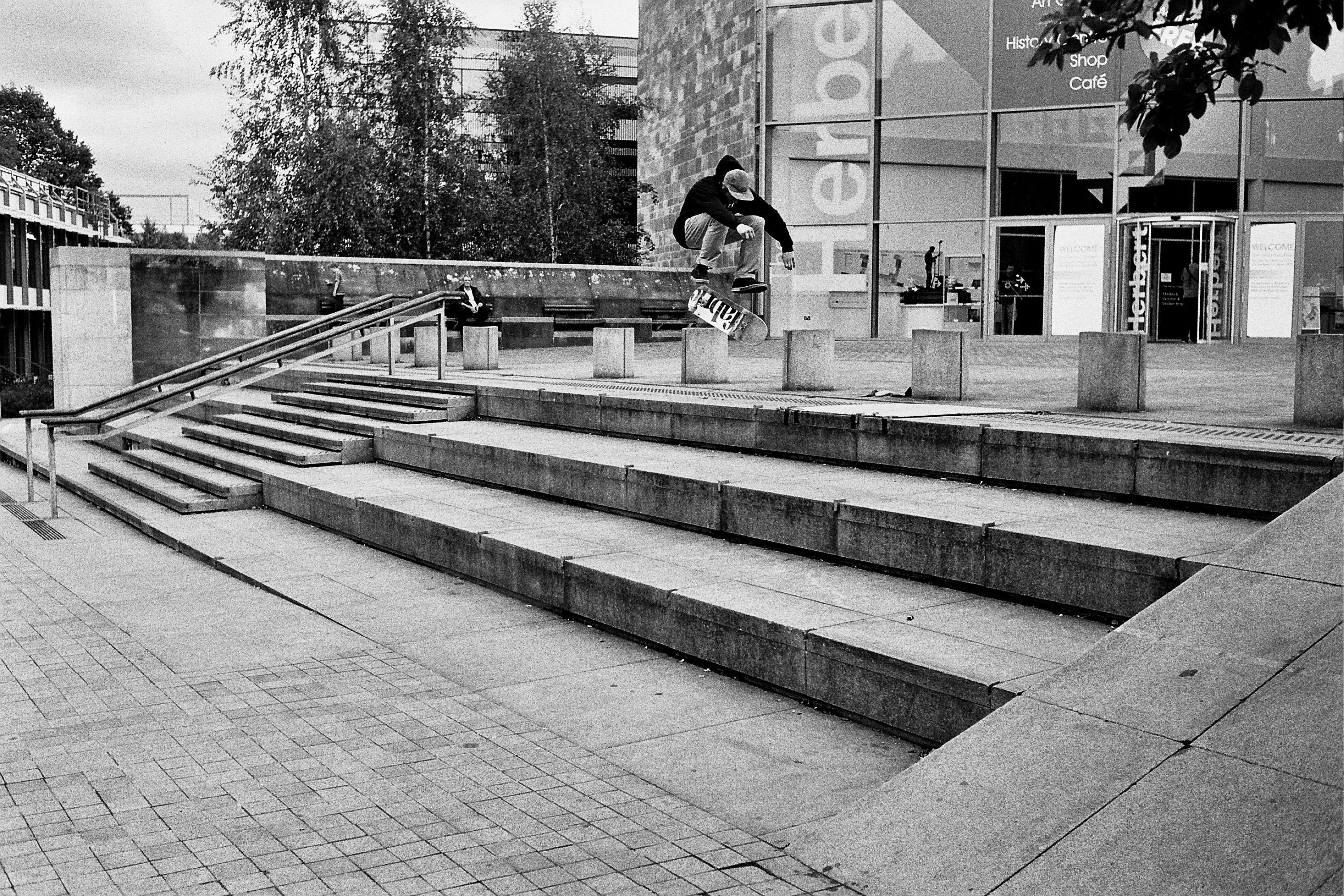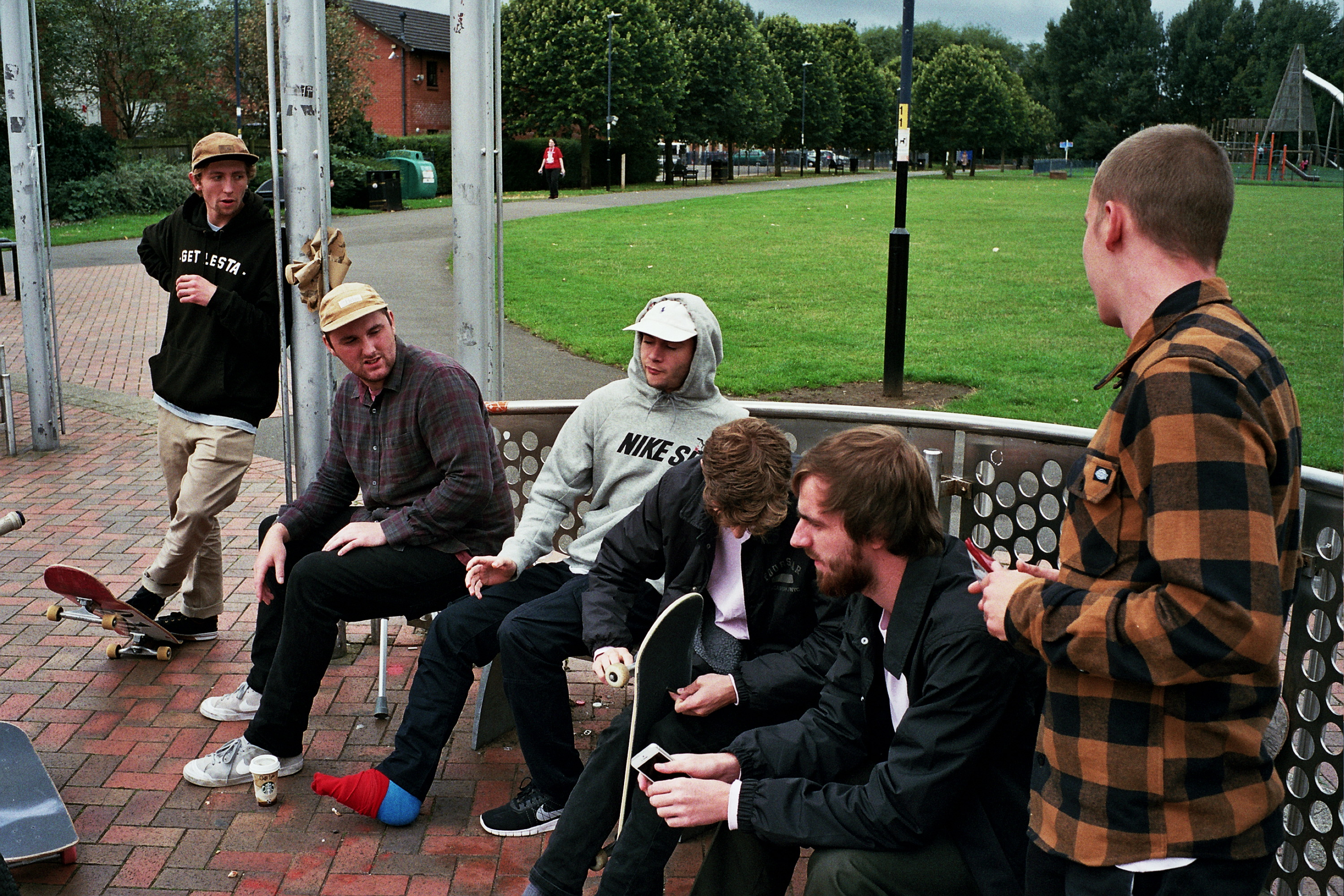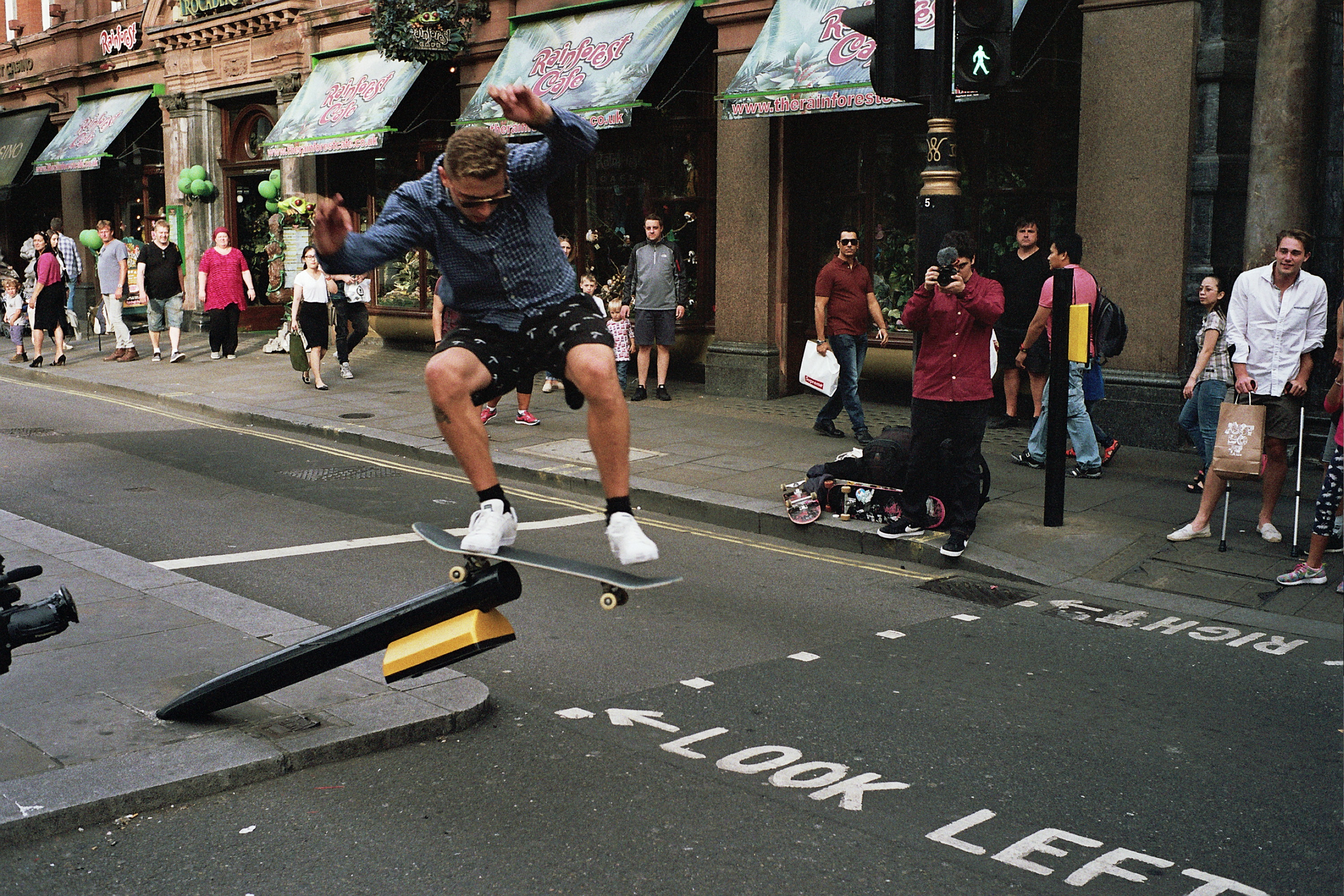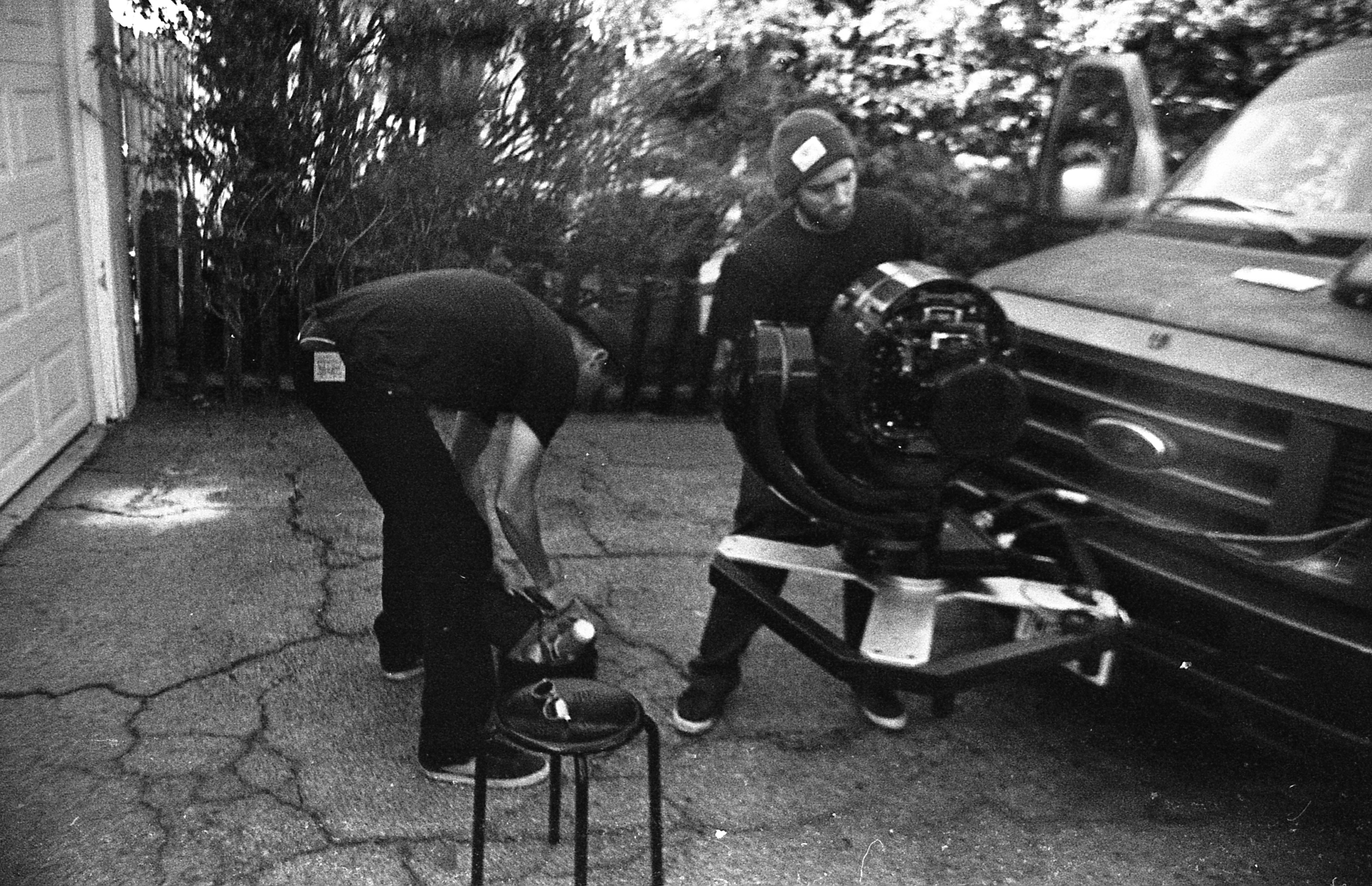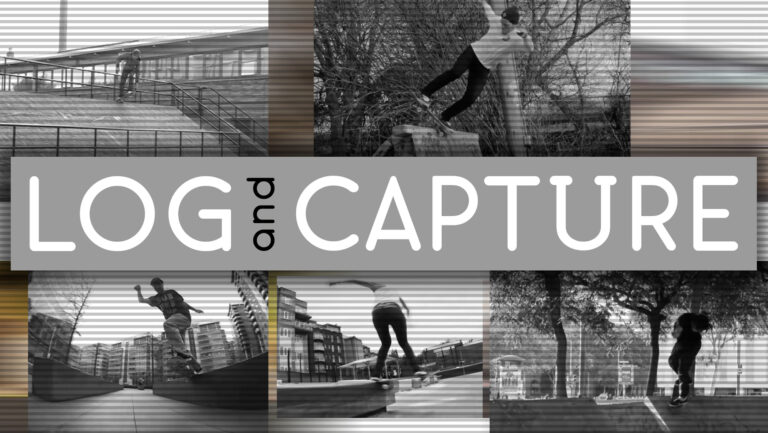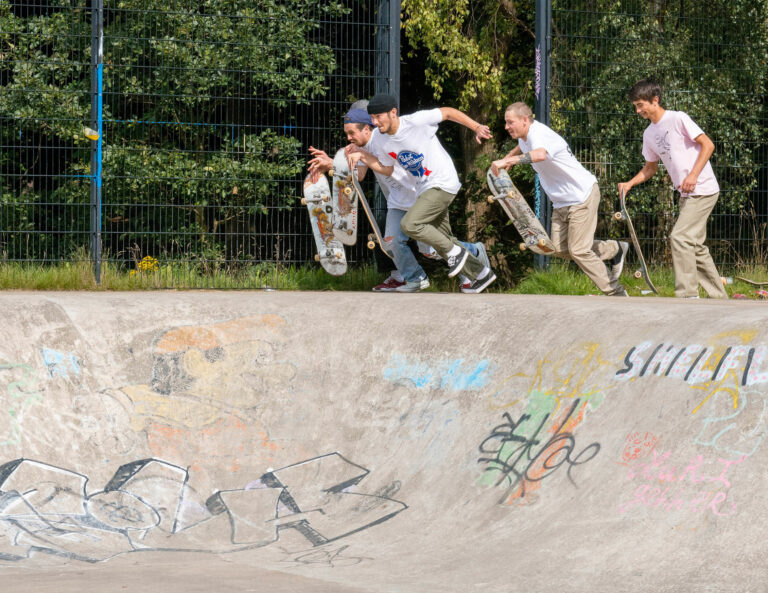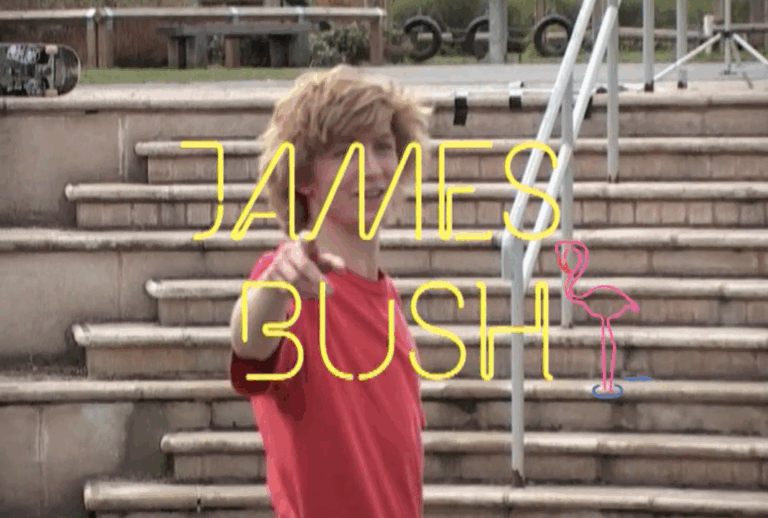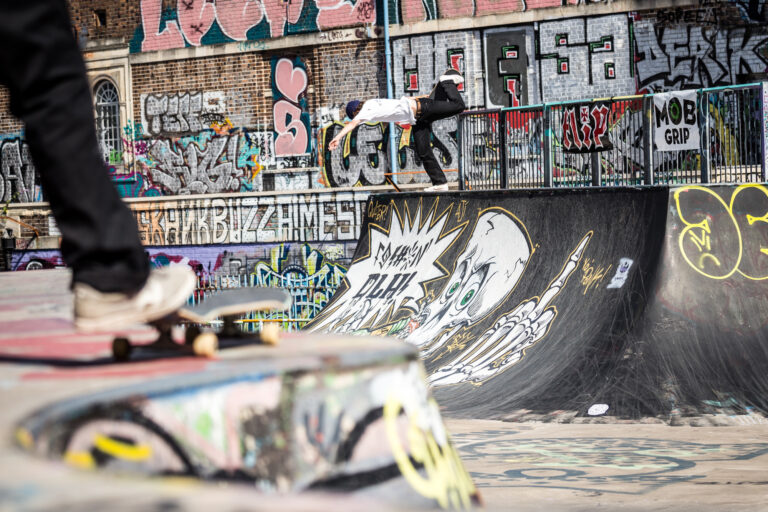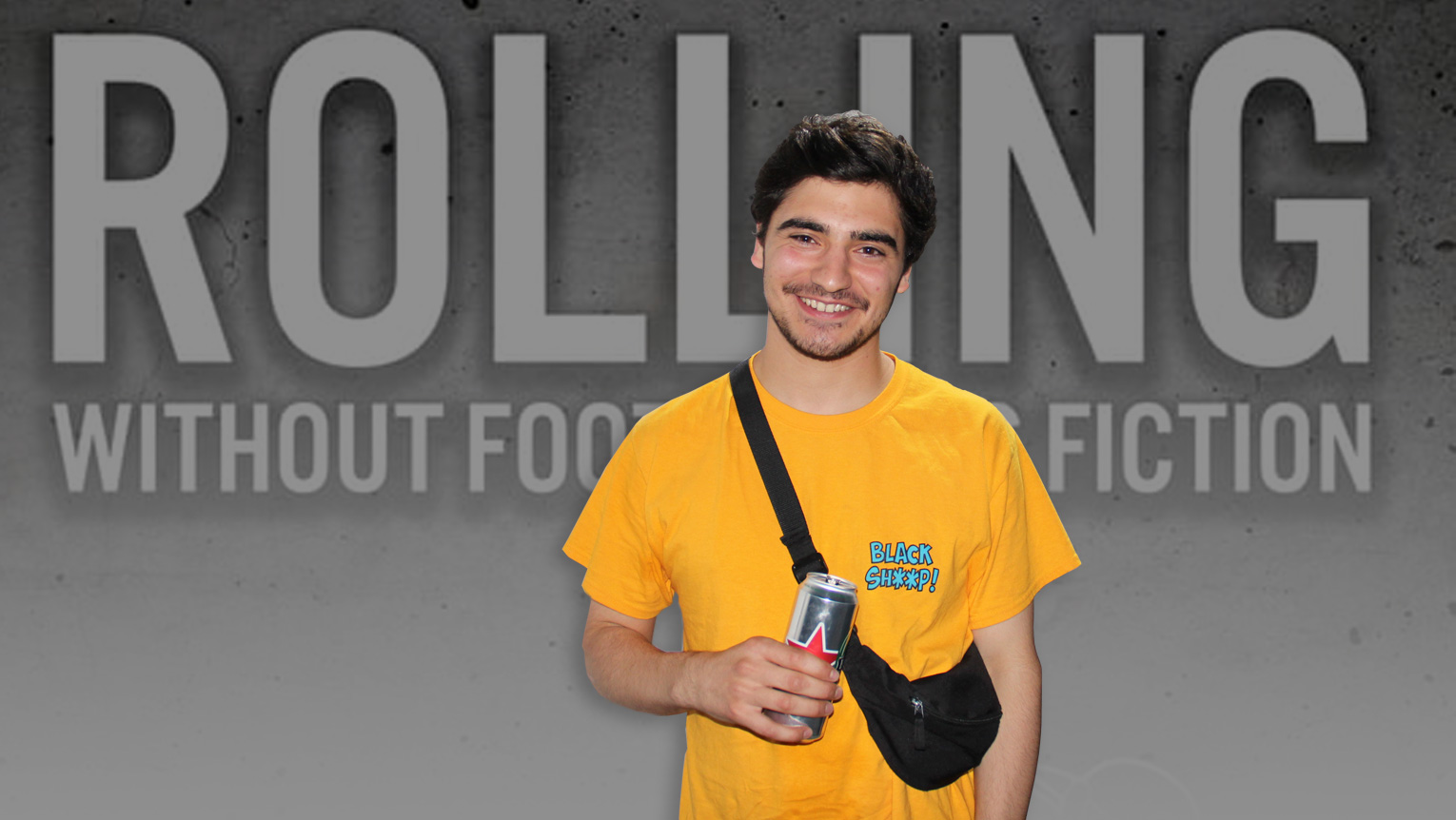
Photos by Rohum Pourtahmasbi and Isaac Boxall
Last weekend saw the culmination of three years’ blood, sweat and toil by Rohum Pourtamahsbi with the premiere of ‘Rolling: Without Footage It’s Fiction’ – an insight into the process of skateboard filmmaking and the lengths that filmers have to go to for their art. Focusing on the contrasts and similarities between making skate flicks in the UK and the US, the film features such camera-wielding luminaries as Isaac Wilkinson, Ty Evans, Henry Edward-Woods, Greg Hunt and Dan Magee.
Attempting to interview Rohum after the interview definitely highlighted the level of glamour which graces UK skateboarding as a whole; after getting the boot from House of Vans halfway through the first question, we headed to Southbank to continue the conversation only to find the Undercroft full of teenagers drinking and fighting in what seemed to be some kind of end of school year piss-up. Ending up in a quieter yet even more ammonia scented corner of the Southbank’s façade, Rohum decided to use the facilities just as an unsuspecting worker bought out the rubbish bags to put in the very corner where urine was flowing freely. Queue a hilariously awkward couple of minutes where Rohum is in far too full a flow to stop and apologising repeatedly whilst pissing, the guy with the bags is shooting amused/helpless looks from me to him and back and I’m in hysterics at the top of the alley.
Once this is out the way we sat down on suspiciously damp wooden pallets to talk about the project, how Instagram has changed consumption of skateboard media and the upcoming Death video amongst other things, all the while allowing the piss-reek of Saturday night London to seep into our pours. The life of a skateboard journalist is always intense…


